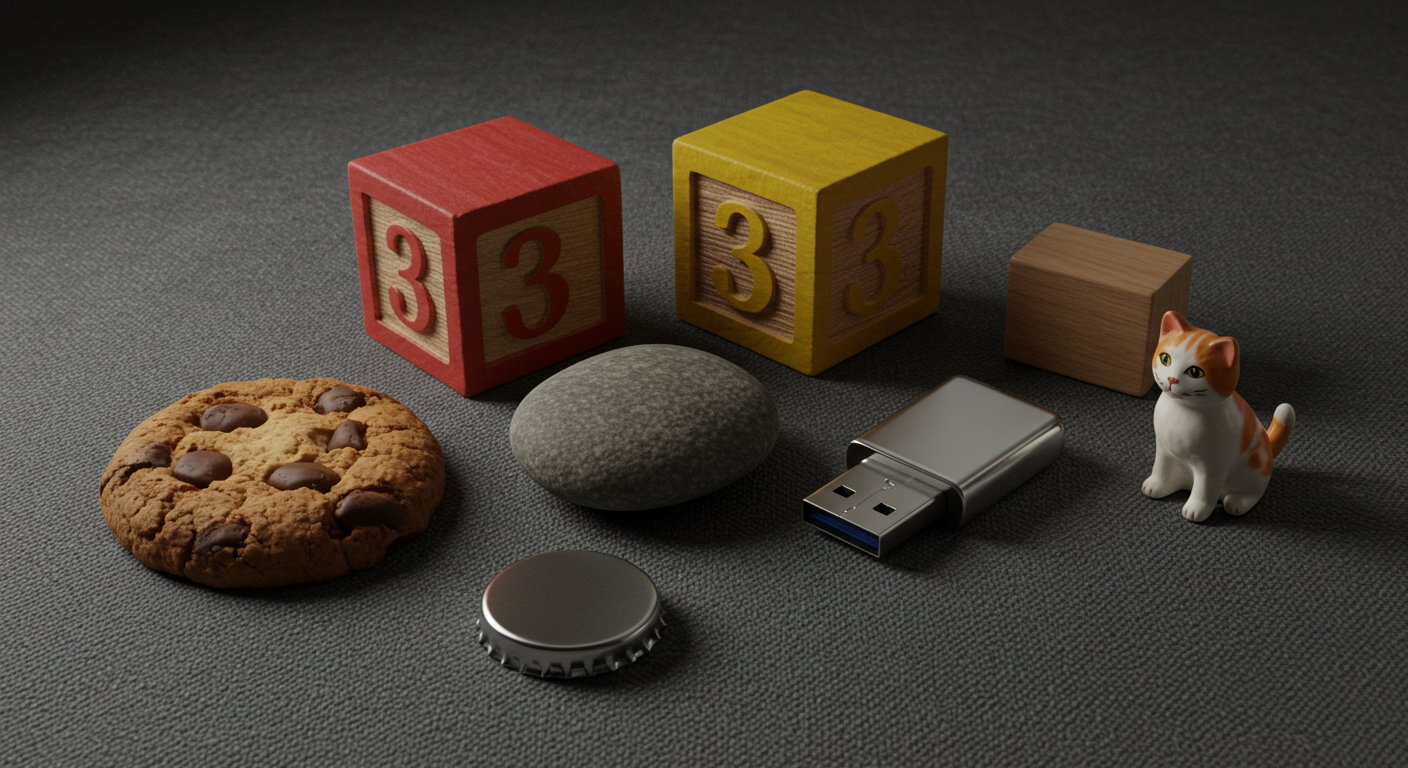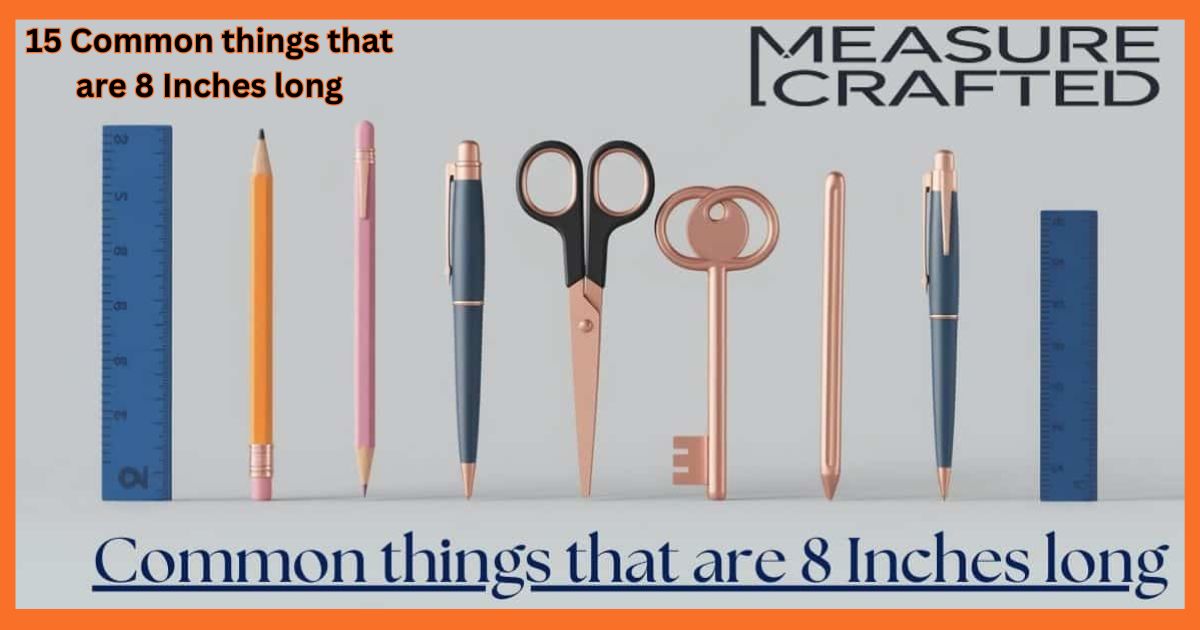There’s something oddly comforting about knowing how big three inches really is. Like, yeah, numbers on a ruler tell you one thing, but holding an object that’s exactly around that size? That suddenly makes it real, tangible. I mean, who hasn’t eyeballed a thing and thought, “Is it really that small, or am I just bad at judging?” So, let’s take a stroll through the quirky, sometimes surprising world of things that measure right about 3 inches (7.62 centimetres). And I’ll bet you’ve got most of these hiding in plain sight somewhere around you right now.
Let’s dive into the micro-universe of everyday objects—stuff that’s small, common, and yet packed with stories, history, and a pinch of culture. Plus, I’ll throw in some fun tidbits and the occasional mini-story, ’cause why not? Real talk, measurements are kinda boring on their own, but with these objects, they’re way more relatable. Ready? Let’s roll!
Credit and Debit Cards: The Wallet Staple That’s Almost 3.37 Inches Wide
You ever pull out your credit card or debit card and just stare at it? These plastic rectangles are super standardized: roughly 3.37 inches wide by about 2.13 inches tall. That’s a smidge bigger than 3 inches in width, but close enough to feel the scale.
The clever thing about these cards? Their size is no accident. It’s all about convenience—slipping perfectly into wallets, card readers, and even smartphones nowadays. Think about how many times a day you interact with one of these little rectangles—paying for coffee, swiping at the grocery store, or just showing an ID. They’re these tiny, ubiquitous portals to so much of our lives.
Side note: The International Organization for Standardization (ISO 7810 ID-1 standard) nailed down this size back in the ’80s to make them globally consistent. Imagine the chaos if every bank had a different size card!
Half a US Dollar Note: The Folded Currency Wonder Measuring About 3 Inches
Fold a US dollar bill in half, and what do you get? A rough length of 3 inches (7.62 cm). More precisely, a dollar bill itself measures about 6.14 inches, so half is pretty close to our magic number.
Currency is a fascinating piece of history and design. The dollar bill is crafted to fit in wallets worldwide, with precise dimensions that allow for easy handling and storage. There’s a kind of artistry to the design too, from the engravings to the durability of the cotton-linen paper blend.
I remember my grandpa telling me once how he used to fold a bill just so to keep it safe in his wallet’s tiny pocket. That folded bill was his lucky charm—and yep, it was about three inches long, a perfect pocket-sized talisman.
The Mighty Hockey Puck: Vulcanized Rubber and Exactly 1 Inch Thick
Okay, so here’s a cool tidbit for sports fans. A hockey puck is usually about 1 inch thick and 3 inches in diameter. The thickness is what makes it a tough little beast on the ice, and the 3-inch diameter gives players a perfect target for shooting and passing.
Made from vulcanized rubber, the puck is designed to withstand the fierce hits and freezing temperatures of the rink. It’s amazing how something so small can carry so much energy, speed, and even emotion for players and fans alike.
My cousin played hockey growing up, and he once told me the puck felt like a tiny, solid black disk of pure determination. Not the usual description, right? But it fits.
Baseball: Between 2.86 and 2.94 Inches in Diameter, Close to Our 3-Inch Benchmark
If you’ve ever held a baseball, you know it’s a perfect size to fit in your palm—around 2.86 to 2.94 inches in diameter, so just a hair under 3 inches. That little difference doesn’t matter much on the field, but in terms of visualization, it’s great for picturing what 3 inches feels like.
Baseballs have a long history, evolving from hand-stitched leather to the precise, machine-crafted balls used today. The 9 to 9.25 inches circumference is key for pitchers, batters, and collectors who appreciate the balance of size and weight.
The game’s charm partly comes from that perfect grip size—a baseball almost feels custom-made to the human hand, like a natural extension.
US Quarters: Tiny Thickness but Big in Symbolism
Let’s zoom in on US quarters. While their diameter is about 0.955 inches, their thickness is what’s interesting here: 1.75 millimetres (for one quarter) and about 5.25 millimetres stacked for three quarters. Think of it—a tiny, round, metallic disk with a thickness you can barely notice unless you stack them up.
Quarters aren’t just coins; they’re cultural icons. The US Mint has released so many commemorative designs that some people collect them like art pieces. Plus, the way the thickness relates to the size makes them handy for quick measurement hacks or crafts.
One time, I saw a kid carefully balance a stack of quarters on his fingertip, amazed at how such small disks could pile up without toppling—reminded me how often we overlook the everyday magic in small things.
Crayons: Waxy Sticks About 3 Inches Long, Coloring Childhood Memories
When you think of Crayola crayons, you picture a rainbow of colors, creativity, and childhood joy. Crayons are typically around 3 inches long, give or take. Their size is perfect for little hands to hold and maneuver, encouraging early artistic expression.
Founded in 1903, Crayola has been a staple of school supplies and home art kits for over a century. These waxy sticks might seem simple, but their design is thoughtfully child-friendly—safe, non-toxic, and sized just right.
I still have a box from my childhood where some crayons are worn down to just over 3 inches, proof of many masterpieces and scribbles past. There’s something poetic about how this humble length captures a whole world of imagination.
Bottle Caps: The Crown Cork, Small But Mighty at Just Under 3 Inches Diameter
Ever popped open a soda? That tiny metal crown cork bottle cap you flick off is roughly just under 3 inches in diameter. Invented in 1892 by William Painter, the crown cork revolutionized beverage sealing, ensuring freshness and convenience for over a century.
Despite their tiny size, these caps have a big impact—not just practical but cultural. Think of summer barbecues, celebrations, or even collectors who seek rare bottle caps from around the world.
Their design is deceptively simple—metal, ridged edges, and a rubber seal inside—but that combo’s been a game-changer in the beverage world. It’s kinda amazing how such a small, mundane object can carry so much history.
Golf Tee: Between 2.75 to 4 Inches Long, Bridging the Gap Between Nature and Sport
Golf tees vary in length but typically fall within the 2.75 to 4 inches range, with 3 inches being right in the middle. These tiny pegs—usually made from wood or plastic—might seem insignificant, but they play a crucial role in the game of golf.
They elevate the ball just enough for a clean hit, optimizing distance and accuracy. There’s also an environmental story here—wooden tees break down naturally, but plastic ones raise concerns about waste and sustainability.
The design of a golf tee has stayed fairly consistent since it was patented in the early 20th century. I once chatted with a local pro who said, “A good tee makes a difference—you’d be surprised.” Turns out, even 3 inches can impact the swing.
Sticky Notes: The Famous 3×3 Inches Square of Office Productivity
Last but not least, the humble sticky note or Post-it. These squares are exactly 3×3 inches, making them perfectly sized for quick notes, reminders, or doodles. Invented accidentally in 1968, sticky notes have become an office staple worldwide.
They stick, peel off, and restick, thanks to a clever adhesive that isn’t too strong, so it doesn’t damage surfaces. Their size lets you jot down just enough info without overwhelming your workspace.
I love how these little notes capture human brains in action—ideas, to-dos, inspirations, all boxed neatly into 9 square inches of sticky paper. If you’ve ever decorated your workspace with a cascade of colorful notes, you know how this tiny measurement fuels big productivity.
Three inches—seems small, right? But as we saw, it’s a size that fits snugly into many parts of our daily lives, from the financial transactions with your credit card, the childhood memories colored with crayons, to the thrilling sports moments involving hockey pucks and baseballs.
Visualizing this length using common items makes abstract numbers easier to grasp and adds a sprinkle of wonder to everyday objects. Next time you need a quick measurement or a relatable size comparison, just reach for any of these items. They’re not just tools but tiny storytellers.
If you want to get even more creative with this, try lining up objects next to each other or stacking a few to get a better sense of scale. Or maybe even use your index finger (tip to second knuckle) or thumb (tip to first knuckle) as informal measuring references—they’re surprisingly consistent!
Got a favorite object from this list? Or maybe you’ve got your own quirky everyday thing that’s just about 3 inches long? Drop a comment and share your story—I’m curious how many of these little wonders you recognize around you right now.
Frequently Asked Questions
how big is 3 inches
3 inches is about the length from the tip of your index finger to the second knuckle, roughly 7.62 centimeters. It’s a small but easily visualizable measurement.
how big is 3 inches compared to an object
Three inches is roughly the width of a credit card or the diameter of a hockey puck, making it easy to picture using everyday items.
things that are 3 inches long
Common objects about 3 inches long include half a US dollar bill, regular crayons, a golf tee, and a stack of three US quarters.
3 inches example
An example of 3 inches is the length of a standard sticky note, which measures 3 by 3 inches, perfect for quick notes or reminders.
what does 3 inches look like
Three inches looks like the distance from your thumb’s tip to its first knuckle, or lining up three bottle caps side by side.

Rober max seo expert



